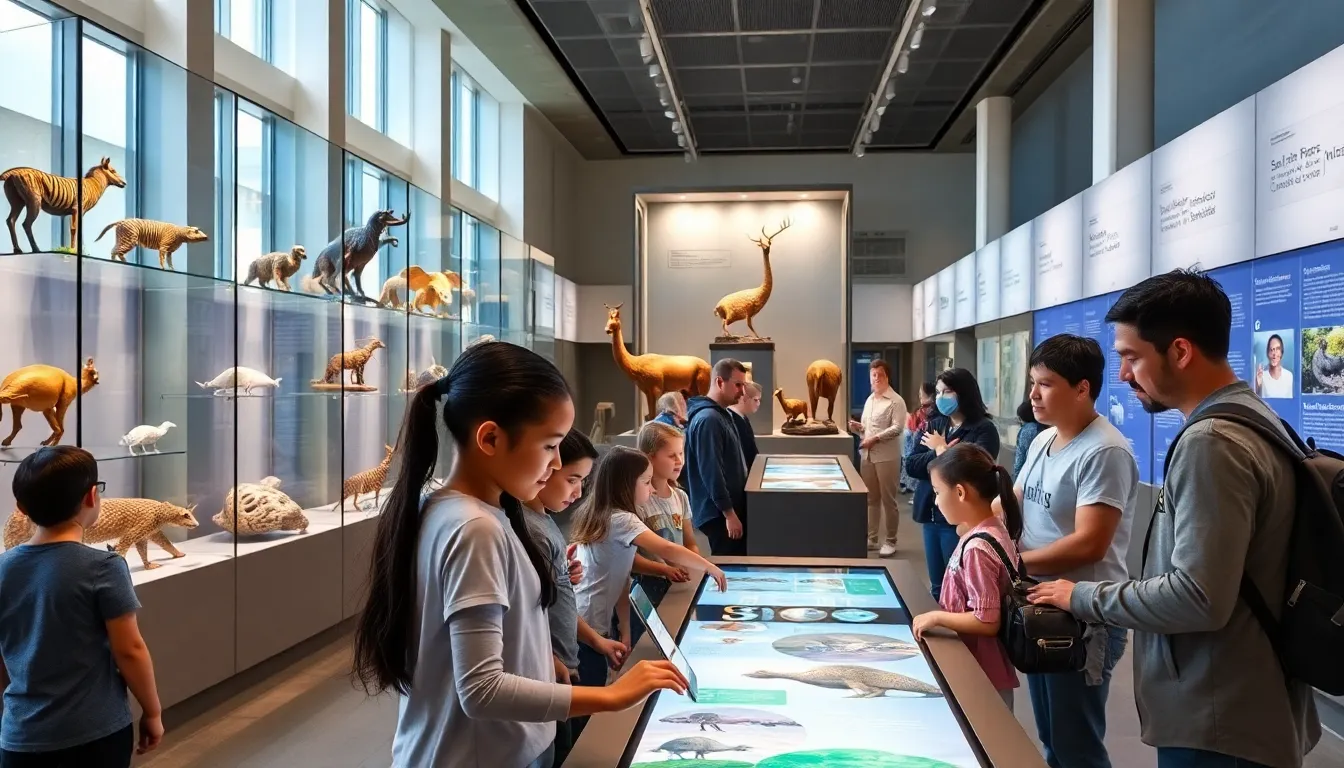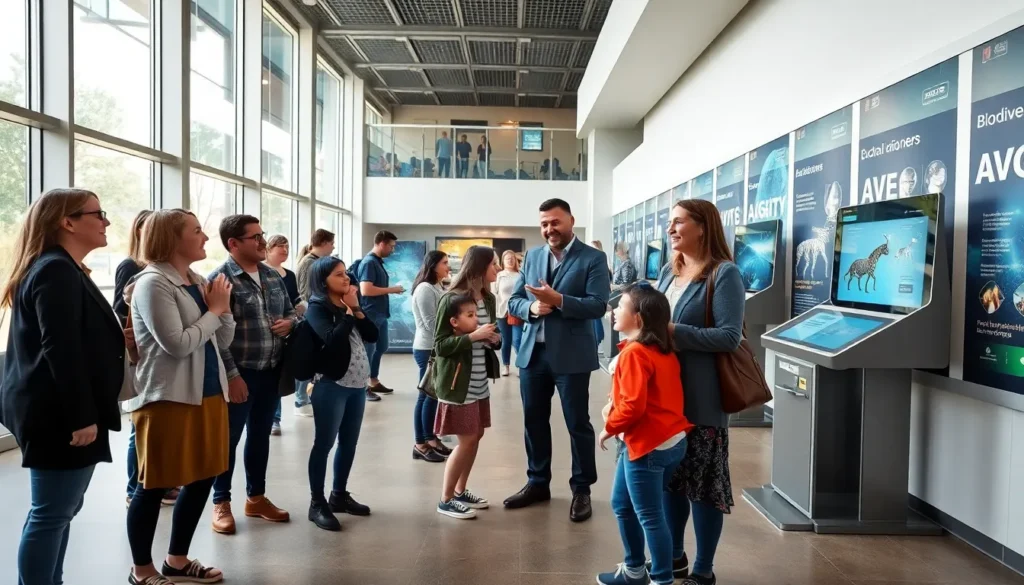Table of Contents
ToggleEver wondered how museums can turn the intriguing realm of life sciences into an adventure? The journey of life science museums is as colorful as the exhibits they house, blending history, technology, and public understanding into one magnificent tapestry. From showcasing ancient artifacts to employing cutting-edge technology, these institutions have evolved significantly over the years. In this text, we’ll explore the historical background, milestones in development, and the bright future ahead for life science museums, all while keeping it insightful and engaging. Get ready to jump into the evolutionary tale of these vital hubs of knowledge.
The Historical Background Of Life Science Museums

The inception of life science museums dates back to the Enlightenment period when curiosity about natural history surged. These early establishments, often associated with universities, aimed to educate society about the natural world, showcasing specimens found in nature. Notably, museums like the British Museum in London, which opened in 1759, began this trend by exhibiting a wide range of biological specimens alongside anthropological artifacts.
As the 19th century rolled in, the focus shifted to a more structured approach. Institutions started organizing collections by taxonomy and geographical origins, which provided a more systematic understanding of life forms. For instance, the American Museum of Natural History opened its doors in 1869, building on the foundation laid by earlier establishments while concentrating on scientific research and education. The evolution of life science museums continued throughout the decades as they expanded their collections and adapted to societal needs.
In the 20th century, life science museums began to embrace a more interactive approach, recognizing that education must engage visitors. Instead of merely displaying specimens, they aimed to evoke curiosity and understanding, signaling the transition from passive observation to active learning.
Today, these museums are not only repositories of knowledge but also centers for community engagement, public discourse, and scientific inquiry.
Key Milestones In The Development Of Exhibits
Understanding the evolution of life science museums requires recognizing key milestones in exhibit development. One of the most notable shifts occurred during the late 20th century, marked by the introduction of immersive experiences. The California Academy of Sciences and the Smithsonian National Museum of Natural History embraced innovative exhibit designs that enhanced visitor interaction.
With advancements in presentation techniques, the display of exhibits transformed dramatically. Early exhibits consisted of static displays of preserved specimens for viewers to learn about life sciences. But, with the rise of technology, museums began incorporating multimedia presentations, tactile experiences, and live demonstrations. This heightened interaction fostered a deeper connection with the subject matter, making learning more engaging.
The late 1990s and early 2000s brought about digital advancements, paving the way for virtual exhibits. Museums used virtual reality and augmented reality to take visitors on unprecedented journeys, allowing them to explore ecosystems or engage with molecular biology in ways never before imagined. In essence, the exhibit floor became a dynamic learning environment where information pulses as vibrantly as the life it represents.
The Role Of Technology In Modern Life Science Museums
In modern digital era, technology has become integral to the operation and visitor experience of life science museums. These institutions use cutting-edge tools not only to preserve their exhibits but also to enhance educational experiences. Interactive screens displaying detailed biological processes, mobile applications providing self-guided tours, and virtual reality experiences immersing visitors in diverse ecosystems are just a few examples.
One significant technological advancement is the digitization of collections. By making their archives accessible online, museums democratize knowledge, allowing individuals from all over the globe to learn about life sciences without stepping foot in the museum. Online databases and virtual tours have become invaluable, especially during unprecedented times such as the recent pandemic, ensuring continued access to education.
Also, life science museums harness social media platforms to engage with a broader audience, promoting exhibitions and educational content in a way that resonates with younger generations. These platforms invite interaction from the public, fueling a community of learners and advocates for science.
Educational Impact On Public Understanding Of Evolution
Life science museums play a critical role in fostering public understanding of evolution. They provide a platform for exploring complex scientific concepts and sparking discussions surrounding topics often perceived as controversial. Through thoughtfully curated exhibits, museums present evolution as a fundamental biological principle, encouraging visitors to confront misconceptions and engage with the science behind it.
For example, interactive installations and educational programs focusing on evolutionary biology bring the subject to life, allowing attendees to visualize the processes involved. Programs targeted at families and school groups often include hands-on learning experiences that teach children about genetics, adaptation, and the interconnectivity of ecosystem members.
The presence of knowledgeable staff and educational outreach programs further reinforces comprehension. Museums often collaborate with schools and community groups, offering workshops and lectures on evolution and biodiversity, which not only solidifies understanding but cultivates a culture of inquiry within the community. Eventually, life science museums serve as catalysts for discussion and education, fostering a more informed and scientifically literate society.
Challenges Facing Life Science Museums Today
Even though their many contributions, life science museums face a host of challenges in today’s rapidly changing world. One pressing issue is funding. Many institutions rely heavily on donations and government support, which can fluctuate based on economic conditions. This instability often limits their ability to expand collections, update exhibits, or invest in innovative technology.
Another significant challenge is the need to remain relevant. With an influx of digital resources available online, museums must compete for attention. They face the dilemma of redefining their purpose in a world where information is readily accessible at one’s fingertips. The challenge lies in creating experiences that cannot be replicated online, dynamic, immersive educational endeavors that excite and engage diverse audiences.
Also, addressing equity and accessibility remains crucial. Museums must strive to welcome all visitors, ensuring exhibits are inclusive and accessible to individuals with disabilities, financial limitations, or cultural barriers. Eventually, life science museums are at a crossroads and must adapt to these challenges to continue thriving as centers of discovery and understanding.
Future Trends In Life Science Museums
As we look to the future, several trends are emerging that will undoubtedly shape the evolution of life science museums. One primary trend is the increasing incorporation of environmental sustainability practices in their operations and programming. As stewards of the natural world, many museums are developing initiatives that emphasize conservation, sustainable practices, and climate change awareness.
Another promising trend is the shift toward community engagement and collaboration. Life science museums are beginning to partner with local organizations, schools, and even indigenous communities to create exhibitions that reflect diverse perspectives on science and the environment. This trend not only enriches the educational experience but also helps museums to connect more meaningfully with their audiences.
Besides, advancements in technology, such as artificial intelligence and machine learning, will continue to influence exhibit design and educational programs. These technologies have the potential to personalize visitor experiences, adapting content to individual interests and promoting deeper understanding of complex scientific concepts. The future holds immense potential for life science museums to evolve and inspire generations to come.







